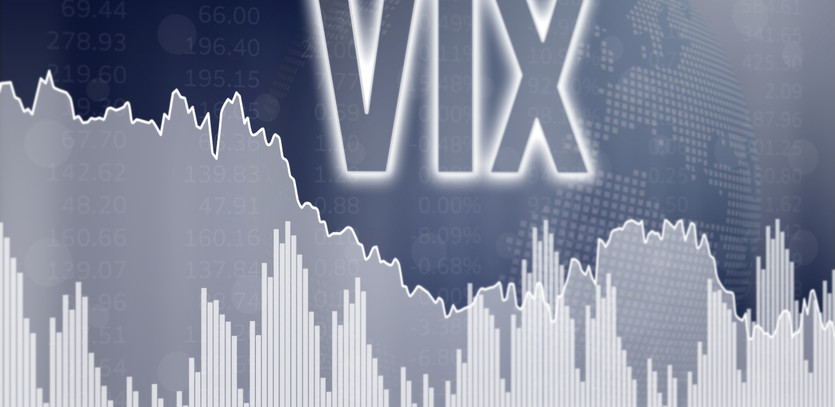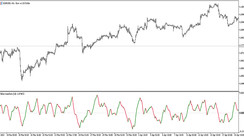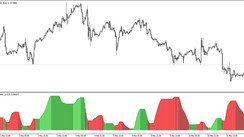The Cboe Volatility Index, abbreviated as VIX, operates in real-time and illustrates the market's prediction of the relative magnitude of near-term price fluctuations of the S&P 500 Index (SPX). The VIX is extracted from the costs of SPX index options with imminent expiration dates, thereby offering a 30-day forward projection of market volatility. Market sentiment is commonly gauged by this volatility, with the degree of apprehension among participants a key indicator.
Frequently known simply as "the VIX" under its ticker symbol, this index was conceived by the Cboe Options Exchange (Cboe) and is presently supervised by Cboe Global Markets. It plays a crucial role in the realm of trading and investment by offering a calculable measure of market risk and investor sentiment.
Key Insights on VIX
The VIX provides a real-time snapshot of the market’s anticipation of volatility for the next 30 days. It serves as a tool for investors to gauge market stress levels, risk, or fear when determining investment strategies. Traders also employ the VIX for pricing derivatives and trading a variety of options and exchange-traded products. Typically, the VIX escalates when stocks fall and dips when they rise.
How the VIX Functions
The central function of the VIX is to measure and convey the degree of price volatility in the S&P 500 Index. Understanding how this index works requires a grasp of the underlying concept of volatility:
- Volatility: This is a statistical measure of the dispersion of returns for a given security or market index. It denotes the rate at which the price of an asset increases or decreases for a set of returns. Volatility is commonly associated with market uncertainty and is therefore an essential measure for risk assessment.
The VIX operates based on this concept, quantifying the extent of price movements in the S&P 500. The larger the price swings in the index, the higher the level of volatility, and vice versa.
Volatility is gauged using two distinctive methods:
-
Historical Volatility: This method computes volatility using statistical operations on past prices over a specific time period. It looks backward, providing a sense of how much an asset's price has moved in the past.
-
Implied Volatility: This is the method that the VIX employs. It derives its value as suggested by options prices. Unlike historical volatility, it is a forward-looking measure, providing an estimate of how much an asset's price is expected to move in the future.
Apart from measuring volatility, the VIX also enables traders to trade VIX futures, options, and ETFs to hedge or speculate on future fluctuations in the index.
VIX: A Groundbreaking Measure of Market-level Volatility
The VIX, with its inception back in 1993, revolutionized the landscape of financial markets by introducing a way to gauge market volatility in the future. Being the first of its kind, the VIX presented an unprecedented opportunity to measure the anticipated volatility within the next 30 days. The construction of this pioneering index is based on the implied volatilities of S&P 500 index options. The S&P 500 Index, being a representative of the broader U.S. stock market, makes the VIX a vital indicator of future volatility for the entire U.S. market.
Key points to remember:
-
First Benchmark: The VIX was the first-ever index designed to project future market volatility. It gave investors and traders a fresh perspective on assessing risk, providing a benchmark to gauge expected market fluctuations.
-
Forward-Looking: Unlike historical volatility, which looks back at past price movements, the VIX is forward-looking. It extracts information from the current pricing of options, which inherently incorporates market expectations about future volatility.
-
30-day Horizon: The VIX provides a snapshot of expected market volatility over the next 30 days. This time frame aligns with the monthly expiry cycle of most options contracts, making it a highly relevant measure for options traders.
-
Real-time Calculation: The VIX is computed in real-time based on live prices of S&P 500 Index options. This allows the VIX to respond immediately to changes in market sentiment. Real-time updates are provided from 3 a.m. to 9:15 a.m., and from 9:30 a.m. to 4:15 p.m. EST.
Through these key features, the VIX has become a globally recognized barometer of U.S. equity market volatility. It serves as a crucial tool for traders and investors seeking insights into market risk and sentiment, facilitating informed decision-making in a dynamic market environment.
VIX Value Calculation
To understand how the value of the VIX is calculated, it's essential to note that it's a reflection of the market's expectations for future volatility. It's derived from the prices of SPX index options, specifically, those options that are due to expire soon. Here is a simplified step-by-step process of the calculation:
-
Selection of Options: The Cboe uses both standard SPX options and weekly SPX options that are traded on its platform for the calculation. The selected options are usually near expiration, providing a view of the market's expectation of volatility over the next 30 days.
-
Aggregation of Options Prices: The process aggregates the weighted prices of various SPX puts and calls across a wide range of strike prices. Both out-of-the-money call and put options are used, with the weight being related to the square of the strike price.
-
Deriving Expected Volatility: The final step involves complex mathematical operations that result in the expected volatility of the S&P 500 Index. The calculated value is the square root of the derived variance and is represented as an annualized percentage.
This calculated value is the VIX index value, providing a measure of the market's expectation for volatility over the next 30-day period. It is important to remember that the VIX does not provide an indication of market direction, but rather the market's expectation of how much the S&P 500 Index will fluctuate.
The Evolution and Trading of the VIX
Born in 1993, the VIX has seen significant evolution and growth over time. Its initial computation was a weighted measure of the implied volatility of eight S&P 100 at-the-money put and call options. At this point, the derivatives market was nascent, slowly finding its place in the financial market landscape.
Fast forward ten years to 2003, the derivatives markets had matured and Cboe, in collaboration with Goldman Sachs, revamped the VIX. It began to use a broader set of options based on the wider S&P 500 Index, which allowed for a more accurate depiction of investors' expectations of future market volatility. This improved methodology is still in effect today and forms the basis for calculating several other variants of the volatility index.
A few key points to highlight:
-
Trading: Trading on the VIX began with the launch of the first VIX-based exchange-traded futures contract by Cboe in March 2004. VIX options came into existence in February 2006. This marked a significant milestone in financial markets, paving the way for volatility to become a tradable asset.
-
New Asset Class: With VIX-linked securities offering pure volatility exposure, they've effectively created a new asset class. These securities have gained traction among active traders, large institutional investors, and hedge fund managers for their portfolio diversification benefits.
-
Negative Correlation: Historically, VIX has demonstrated a strong negative correlation with the stock market returns – when stocks tumble, volatility generally rises, and vice versa.
It's worth noting that the VIX's popularity has led to the birth of several other volatility measures for different market indexes, including the Cboe Short-Term Volatility Index (VIX9D), Cboe S&P 500 3-Month Volatility Index (VIX3M), Cboe S&P 500 6-Month Volatility Index (VIX6M), and others.
What Does the VIX Indicate?
The VIX has often been called the "Fear Index," as it is a measure of the market's nerve. By gauging the expected level of volatility in the S&P 500 index, the VIX gives us an idea of the level of fear or stress present in the market.
A few key points to consider:
-
Market Sentiment: The higher the VIX level, the greater the market's anxiety and uncertainty. For instance, VIX levels surpassing 30 typically indicate substantial market uncertainty and turmoil.
-
Trading Insight: The VIX is not just a measure of fear but also an indicator of trading sentiment. Traders often use the VIX to make decisions about buying or selling options, as it reflects the market's expectations of future volatility.
-
Risk Assessment: From an investor's perspective, the VIX can be a valuable tool for assessing risk. High levels of the VIX may prompt caution, while low levels could signal complacency.
Understanding the VIX can provide crucial insights into market dynamics and sentiment, making it a valuable tool in any investor's toolkit.
Using the VIX for Hedging Downside Risk
Put options, which are price-dependent on market volatility, can adequately hedge downside risk. Investors usually purchase options when the VIX is relatively low, and put premiums are inexpensive.
The Normal Value for the VIX
The long-term average of the VIX is around 21.4. High VIX levels, usually above 30, can indicate increased volatility and fear in the market, often linked with a bear market.





